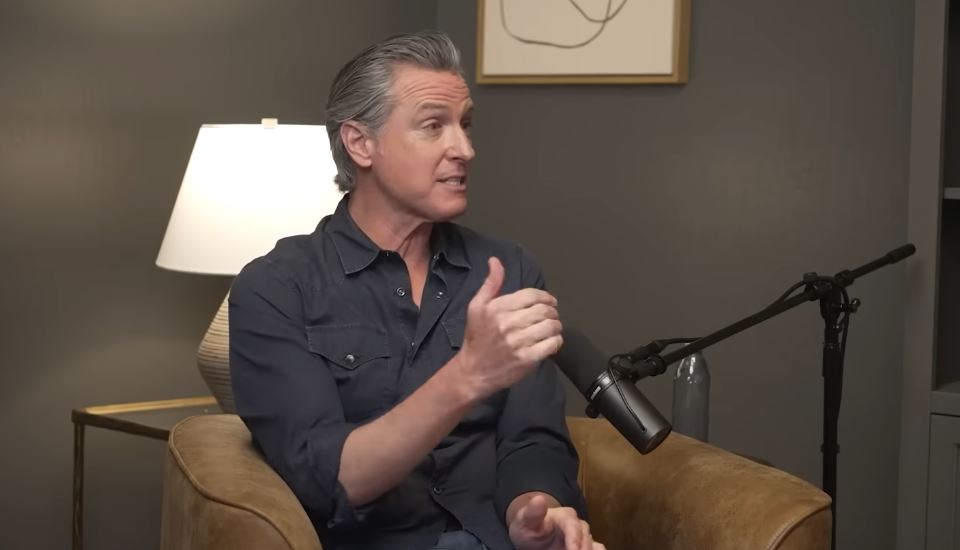
Gavin Newsom began his career as an entrepreneur and has steadily increased his wealth over the last 20 years, amassing a diverse portfolio worth between $30 and $42 million. Although that number might seem excessively high for a public servant, a closer look reveals that the marriage of political capital and private business savvy creates a particularly creative route to financial strength. Newsom is more than just a career politician; he is a model of striking a balance between influence and business thanks to his early investments, strategic business growth, and acute understanding of political timing.
With the help of billionaire heir Gordon Getty, Newsom established PlumpJack in 1992, marking his first bold move into the wine and hospitality industry. The collaboration was incredibly successful. Longtime family friend Getty contributed money and credibility to the endeavor, and Newsom oversaw day-to-day operations. That one wine shop eventually grew into a collection of establishments that included upscale dining establishments, shopping centers, and resort hotels. He grew cautiously but confidently through strategic reinvestments, eventually adding over 700 jobs throughout Northern California.
Gavin Newsom – Personal and Professional Overview
| Attribute | Detail |
|---|---|
| Full Name | Gavin Christopher Newsom |
| Date of Birth | October 10, 1967 |
| Age | 57 |
| Birthplace | San Francisco, California |
| Nationality | American |
| Education | Santa Clara University, B.S. Political Science (1989) |
| Net Worth (2025) | Estimated $30 to $42 million |
| Occupation | Politician, Businessman, Investor |
| Current Office | Governor of California (since 2019) |
| Political Party | Democratic Party |
| Spouse | Jennifer Siebel Newsom |
| Children | Four |
| Key Ventures | PlumpJack Group, Airelle Wines, Falstaff Management |
| Primary Residences | Fair Oaks & Kentfield, California |
The lesson that Newsom’s story offers early-stage entrepreneurs is especially helpful: trust-based partnerships can open up financial opportunities more quickly than formal training ever could. Newsom acquired his wealth gradually, first through equity, then through scale, and finally through consistent passive income, in contrast to other political figures who inherited enormous sums. He was able to establish a presence in sectors characterized by high entry barriers and sustained value creation thanks to his PlumpJack endeavors and subsequent additions like Airelle Wines and Falstaff Management Group.
Gavin expanded his wealth structure by marrying Jennifer Siebel Newsom, the daughter of investment tycoon Ken Siebel. Over $1 million is the value of their blind trust, which has steadily increased since he took office and protects their joint investments while abiding by ethics laws. They have preserved transparency without compromising growth by employing this structure. This model has proven to be very effective for contemporary political families, especially when negotiating the fine line between private wealth and public service.
Both praise and criticism were directed at Newsom and his wife’s $9.1 million Kentfield estate purchase in 2024. Supporters highlighted the governor’s longstanding dedication to the state’s economy, while critics cited California’s housing crisis. The acquisition of hotel heir Daniel Pritzker demonstrated Newsom’s extraordinary purchasing power, which came from years of compounding capital rather than his governor’s salary. Even as political scrutiny increased, the acquisition significantly increased his asset base and demonstrated his growing financial stability.
Even in uncertain times, Newsom’s business plan has held up exceptionally well. When Silicon Valley Bank failed in 2023, it was discovered that his wine businesses were among its customers. Despite the fact that no misconduct was discovered, the link demonstrated how closely his holdings were linked to California’s financial system. These kinds of events highlight how financial exposure has two aspects: opportunity and accountability. Newsom managed to weather the disruption with little long-term effect by keeping diversified assets and steering clear of dangerous overextensions.
His capacity to transform controversy into fortitude has become a defining characteristic. His now-famous dinner at The French Laundry during the pandemic drew harsh criticism, but he recovered remarkably quickly. Instead of withdrawing from public life, he strengthened his leadership position by speaking with voters face-to-face and subtly bolstering his economic base. This flexibility—changing the narrative while preserving the brand—is remarkably comparable to how seasoned businesspeople handle public relations crises while maintaining shareholder confidence.
Newsom has also made very calculated real estate investments over the last ten years. His $3.7 million 2019 purchase of his Fair Oaks home was quickly followed by the Kentfield estate, demonstrating a consistent upward trend in both lifestyle and wealth. Although unquestionably opulent, these residences are within the contemporary norm for California’s upper class and serve as tangible symbols of a profession based on upward mobility rather than entitlement.
Being unattached to donors grants Newsom a unique freedom that sets him apart from many of his political contemporaries. As demonstrated in the 2021 recall election, his financial independence enables him to run a vigorous campaign, make audacious policy decisions, and partially finance his own political defenses. His campaign team minimized their reliance on traditional fundraising while optimizing results through the use of data-driven voter outreach and advanced analytics. Because of this, he has established himself as a candidate who is not only appealing to the general public but also self-sufficient.
In terms of national comparisons, Newsom’s financial profile is similar to that of governors who came to office with significant resources, such as J.B. Pritzker and Jared Polis. However, Newsom’s path is especially unique. He did not rely on a family business empire or inherit his wealth outright. Rather, he increased his wealth through strategic alliances, layered ownership, and prompt departures from operational positions. In an early indication of the line he would draw between politics and private wealth, he had already sold his stake in city-based PlumpJack companies by 2004, the year he was elected mayor of San Francisco, in order to avoid conflicts of interest.
The transparency of Newsom’s financial rise is what keeps it intriguing. He doesn’t use shell corporations or offshore havens to conceal his investments. Rather, they are openly revealed and linked to well-known Californian brands and real estate. In a time when public confidence frequently rests on financial integrity, Newsom’s strategy seems noticeably more hygienic than some of his peers’.
Newsom’s wealth will garner even more attention in the upcoming years as conjecture surrounding a possible 2028 presidential campaign intensifies. Despite his wealth, he has influence because he can speak authoritatively about housing, taxes, and financial regulation without coming across as hypocritical. His record demonstrates that he is a man who is aware of the responsibilities of governance as well as the workings of capitalism. That balance might be especially convincing on the national scene if handled carefully.
